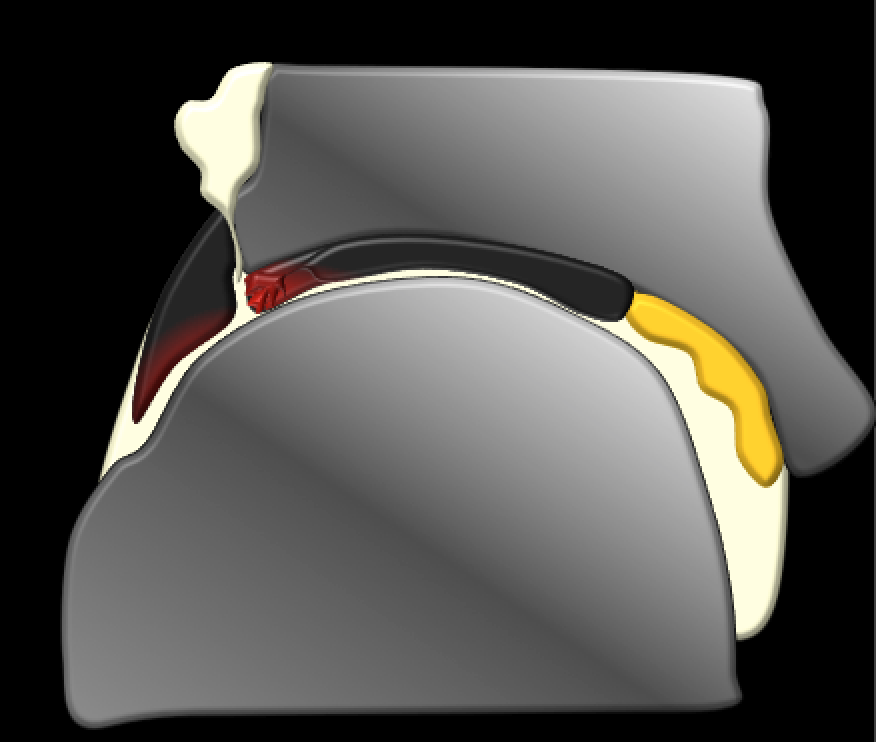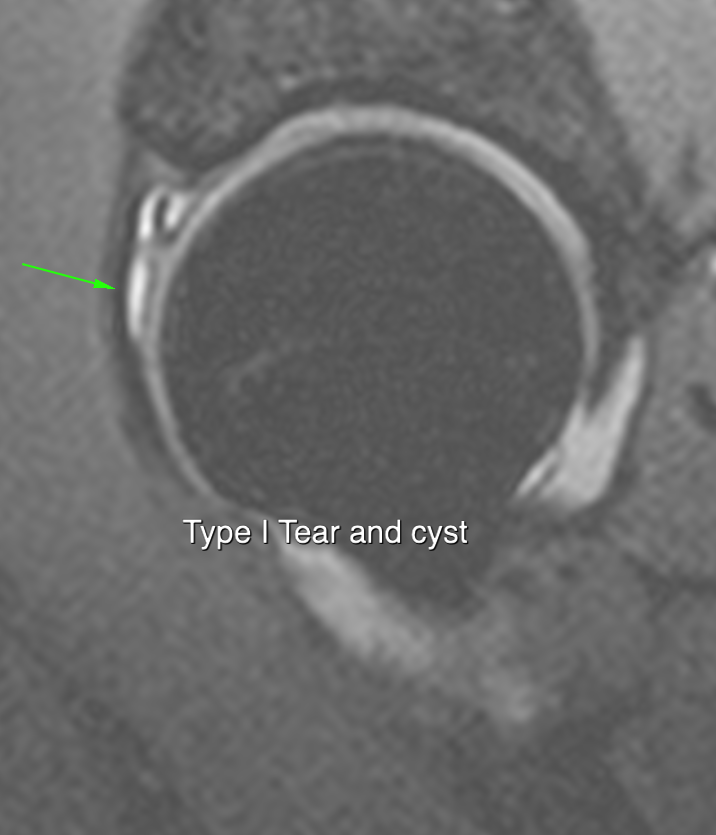The classic labral injury of cam impingement is a type 1 tear
Type I (Junctional) tear
• A cleft begins to separate the labrum from its acetabular attachment
• The cleft deepens to a tear
• A paralabral cyst may form.
A different pattern of labral injury occurs with rim/pincer impingement called a Type II tear
Type II (Intrasubstance) tear
• intrasubstance delamination
• cystic degeneration
Both types are most commonly involve the anterosuperior portion of the labrum.
Surgical option include osteochondroplasty, labral excision or repair.
Anteroinferior juctional signal often due to normal recess
Small sulcus also found in superior labrum
Clefts also found posteroinferior labrum
Tears seen in 30% of asymptomatic individuals
Plain films are used in the initial assessment of FAI.
Cartilage thinner on the acetabular side
Cartilage lesions in FAI can be subtle. Loss of joint space is a very late finding and only occurs when significant osteoarthritis has supervened. In the
The earliest changes occure anterolaterally adjacent to the labrum.
The lesion is sometimes called the 'Carpet Lesion'.
Cross sectional imaging options include:
Plain MRI
MR Arthrography with traction
CT arthrography with traction
dGEMRIC
T1 T2 mapping T1rho
Plain MRI Even MR arthography struggles to make a diagnosis of the associated cartilage lesion though some features have been described including loss of normal cartilage signal, surface irregularity and clefts.
Sagittal images best for the anterosuperior lesion
Patterns of cartilage damage may give clues to the aetiology
Cam lesions tend to occur from the junctional area and extend inwards Dysplasia tends to result in central damage extending outwards
The cartilage is most protected in Pincer deformity



